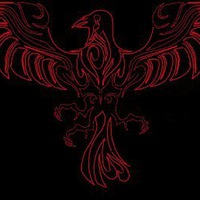
Какой материал для изготовления карт использовали в Древнем мире?
 0
0
 0
0
Ответы на вопрос
 Внимание! Ответы на вопросы дают живые люди. Они могут содержать ошибочную информацию, заблуждения, а также ответы могут быть сгенерированы нейросетями. Будьте внимательны. Если вы уверены, что ответ неверный, нажмите кнопку "Пожаловаться" под ответом.
Внимание! Ответы на вопросы дают живые люди. Они могут содержать ошибочную информацию, заблуждения, а также ответы могут быть сгенерированы нейросетями. Будьте внимательны. Если вы уверены, что ответ неверный, нажмите кнопку "Пожаловаться" под ответом.

В это время появились первые съёмщики – люди, проводившие картографическую съёмку местности. Картографы подробно изучали местность, пользуясь при этом компасом, мерным шнуром и мерным колесом. Карты создавались мастерами-ремесленниками и выпускались небольшими тиражами.
Наиболее активно картография развивалась в Испании, Португалии и в Италии, переживавшей в тот период эпоху Возрождения. Мастера в Венеции, Флоренции и торговой Генуе создавали карты в виде ковров, фресок, ювелирных изделий. Такие необычные произведения искусства украшали преимущественно дома богатых людей.
После 1550-х годов центр картографии сместился в Нидерланды. Именно здесь появились первые отметки морских глубин на картах, а также первый компактный дорожный сборник карт – прообраз современных туристических путеводителей.
В 1570 г. голландский картограф Абрахам Ортелий создал первый географический атлас, которым пользовались все мореплаватели и который насчитывал 70 карт большого формата.
 0
0
 0
0

Materials for Making Maps in the Ancient World
In the ancient world, various materials were used for making maps. While the specific materials varied depending on the time period and civilization, some common materials include:
1. Papyrus: Papyrus was widely used in ancient Egypt and other civilizations in the Mediterranean region. It is a type of paper-like material made from the pith of the papyrus plant. Papyrus maps were created by drawing or painting on the surface of the papyrus sheets.
2. Animal Skin (Parchment/Vellum): Animal skins, such as parchment or vellum, were commonly used for making maps in ancient times. Parchment is made from the skin of sheep, goats, or calves, while vellum is specifically made from calf skin. These materials provided a durable and long-lasting surface for mapmaking. Maps were drawn or painted on the prepared animal skin using ink or pigments.
3. Clay Tablets: In Mesopotamia, clay tablets were used for various purposes, including mapmaking. These tablets were made by inscribing cuneiform script onto wet clay and then drying or firing them. While clay tablets were not as common for mapmaking as papyrus or animal skin, they were used to create simple maps and land surveys in ancient Mesopotamia.
4. Metal Plates: Metal plates, such as bronze or copper, were occasionally used for making maps in ancient times. These plates provided a durable and long-lasting surface for engraving or etching maps. Metal maps were often used for military or administrative purposes and were more common in later periods, such as during the Roman Empire.
5. Stone: In some cases, maps were carved or engraved onto stone surfaces. Stone maps were typically used for large-scale representations, such as city plans or territorial maps. Examples of stone maps can be found in ancient civilizations like the Maya and the Inca.
It's important to note that the availability and use of specific materials for mapmaking varied across different regions and time periods in the ancient world. The materials mentioned above are some of the commonly known materials used, but there may have been other materials and techniques employed as well.
I hope this information helps! Let me know if you have any further questions.
 0
0
 0
0
Похожие вопросы
Топ вопросов за вчера в категории География
Последние заданные вопросы в категории География
-
Математика
-
Литература
-
Алгебра
-
Русский язык
-
Геометрия
-
Английский язык
-
Химия
-
Физика
-
Биология
-
Другие предметы
-
История
-
Обществознание
-
Окружающий мир
-
География
-
Українська мова
-
Информатика
-
Українська література
-
Қазақ тiлi
-
Экономика
-
Музыка
-
Право
-
Беларуская мова
-
Французский язык
-
Немецкий язык
-
МХК
-
ОБЖ
-
Психология
-
Физкультура и спорт
-
Астрономия
-
Кыргыз тили
-
Оʻzbek tili























